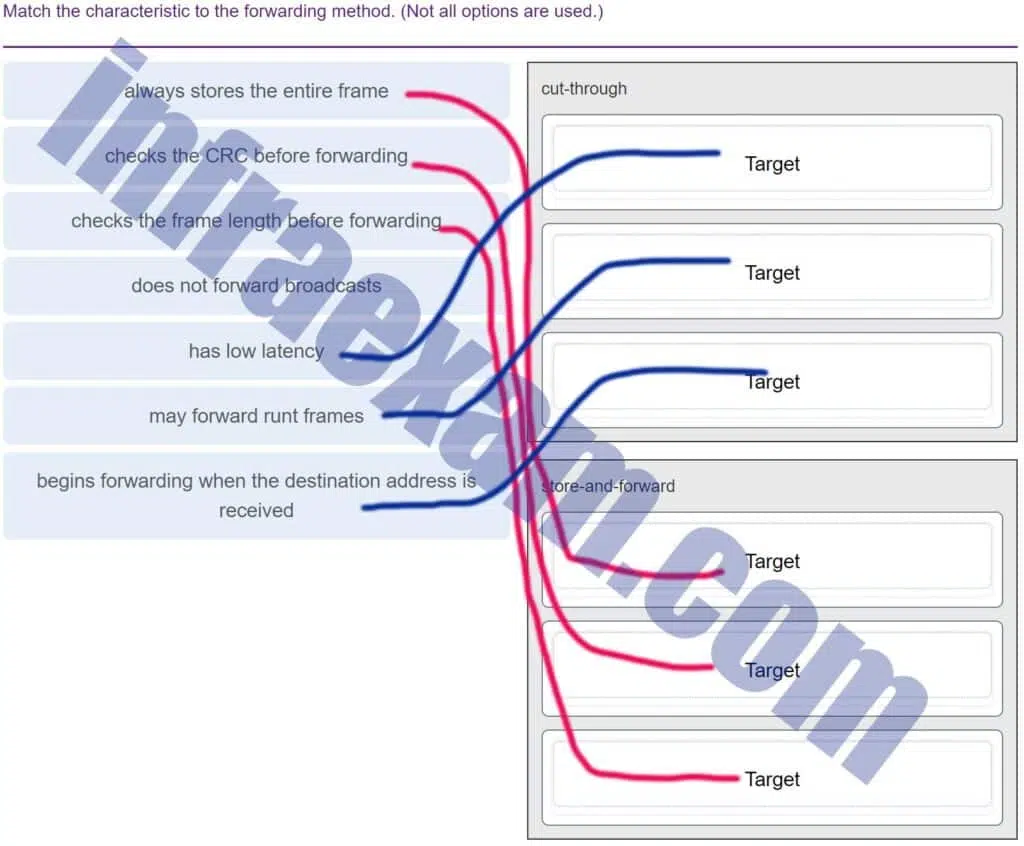| Explanation & Hint:
Cut-Through Switching:
- Begins forwarding when the destination address is received: This mode starts to forward the frame as soon as the switch reads the destination MAC address. It does not wait for the entire frame to arrive before it begins forwarding it.
- Has low latency: Because cut-through switches start forwarding frames before they are completely received, there is less processing time, and thus, lower latency.
- May forward runt frames: Since cut-through switches do not wait for the entire frame to arrive and do not check the frame’s integrity before forwarding, they may forward frames that are smaller than the minimum legal frame size, known as runt frames.
Store-and-Forward Switching:
- Always stores the entire frame: The switch receives the whole frame and buffers it completely before making any decisions on forwarding. This allows the switch to look at the entire frame from start to finish.
- Checks the frame length before forwarding: While the frame is in the buffer, the switch checks to ensure that it is not below the minimum frame size (undersized, which would make it a runt frame) or above the maximum frame size (oversized, which would make it a giant frame). Frames that don’t meet the correct specifications are discarded.
- Checks the CRC before forwarding: The switch also performs an integrity check on the frame using the Cyclic Redundancy Check (CRC). If the frame fails this check, it indicates that the frame has errors, and the switch discards it to prevent the propagation of corrupt data.
|

